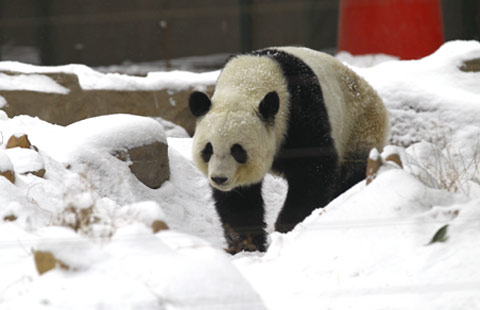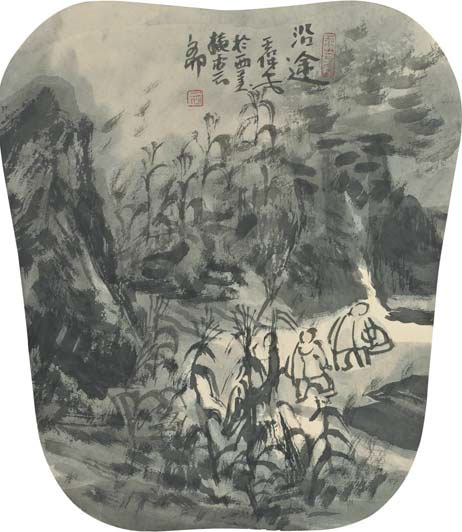Naturally artistic
Updated: 2014-03-02 07:34
By Fu Chao (China Daily)
|
|||||||||||
|
Zhang Liang in the Woods (245 cm x 740 cm). |
|
Part of Zhang Liang in the Woods. |
Wang Baoan takes Mother Nature as his favorite muse
Wang Baoan says he paints because it takes him closer to nature and that he thrives off the feeling of liberation it gives him.
"Painters today believe that it will be out of fashion to stick to tradition," Wang said. "Trendy but mechanical stuff fills their work and no one really cares about nature or life, anymore."
Creating mostly landscapes in ink and watercolor, one of the main categories of traditional Chinese painting, the 50-year-old artist shows a unique interpretation in his attitude to life and interactions between human beings and nature.
Rejecting repetition in a painting, Wang noted "I like thinking - I'm always exploring new ways to better express myself."
His eagerness to present works in various styles makes Wang a keen observer of life, according to critics.
He said that Chinese painting is about showing the spirit and essence of things - the unspoken connection between painter and object.
As an artist living in modern times, nature is something that is sometimes out of sight but never out of mind.
He paints the mountains and woods where people live a reclusive life but also depicts a longing for a laidback and carefree lifestyle.
His paintings are bathed in an otherworldly blur made with seemingly casual lines and strokes.
Experimenting with different styles and painting freehand enable the painter to retain a distinct voice in the ever-changing art world, critics say.

Wang said he has to go through three phases before a painting is finally done - involvement, reflection and representation.
Involvement means to spend long periods with nature, in the woods, at the beach or just time in a park.
Last year, Wang spent several months on the Zibai Mountain in Shaanxi to seek inspiration for his new work on Zhang Liang, a legendary figure of Chinese history who led a reclusive life on the mountain.
Reflection, Wang said, is the most crucial phase. It means to find an object in nature the painter can best relate to, then to figure out the relationship between the object and the painter to feel its spirit.
"If there is only observing and no thinking, feeling, understanding or reflection, there will be nothing innovative and unique," Wang said.
He noted that Chinese painting is an art form that celebrates the burst of emotion and energy of a certain moment. Delivering that emotion and energy can only happen during reflection.
Representation, as the final phase of Wang's creative process, is the conclusion.
"It could simply be a presentation of what I got from the involvement and reflection, exactly something I have been looking for or it could also be a transcendence, something that carries its own meaning," Wang said.
Wang noted that Chinese painting should always be vague and touch the viewer with "some kind of vibe".
Critics say his paintings bring the viewer into a spiritual place they have been looking for where they can finally relax and become who they really are.
Wang's ideas regarding Chinese art and painting as a creative process have been influential and his works are critically acclaimed, critics say.
He has been lecturing on Chinese painting at universities for many years. He now teaches at the Xi'an Academy of Fine Arts.
fuchao@chinadaily.com.cn
|
Silent Woods. |
|
Beautiful Scenery. |
|
On the Road. |
(China Daily 03/02/2014 page7)
Today's Top News
Putin not yet decided on use of force in Ukraine
28 dead in Kunming violence
China, UK hold dialogue on ties
Ukraine protests over airspace violation
Perrin takes on China's soccer team
China grills US in human rights report
Perrin takes on China's soccer team
Armed men seize govt HQ in Ukraine's Crimea
Hot Topics
Lunar probe , China growth forecasts, Emission rules get tougher, China seen through 'colored lens', International board,
Editor's Picks

|

|

|

|

|

|










